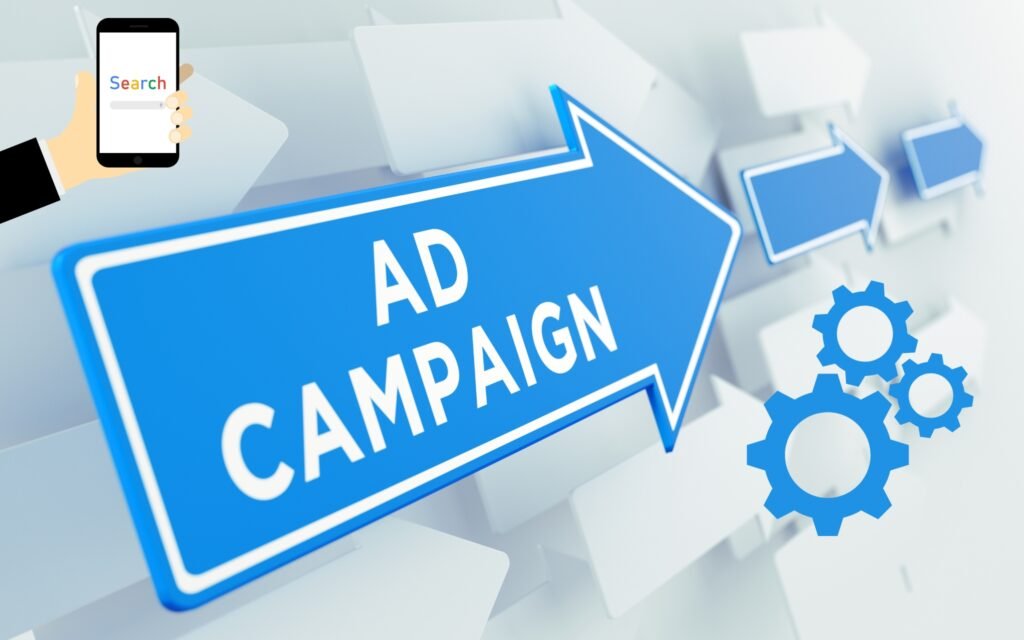Learn herein how to build such a law enforcement audience Google Ads from scratch with targeted approaches, custom audiences, and high-performance campaigns.
The first time I tried working with Google Ads, it gave me a big headache. It was the equivalent of going into a room that has a whole bunch of different options-discrete levers, buttons, and other kinds of controls-and someone does not necessarily know which one to jimmy in order to get the right result. I can remember sitting at my desk for hours, trying to figure out how to create effective ads that targeted a niche audience.
Fast forward a few years later and I found myself helping a friend with a law enforcement equipment business who wanted to learn how to build an audience in Google Ads for law enforcement. I just suddenly realized how far I’d come.
If that sounds like where you are right now-confused, a bit frustrated, and unsure where to start-don’t worry. I’ve been there. And in this guide, I’m going to walk you through how to create a successful Google Ads strategy specifically for targeting the law enforcement community. Whether looking to sell products and offer services or simply build awareness, this guide will help you reach the right audience.
Table of Contents
Why Advertise Law Enforcement Agencies on Google Ads?
Before I get into the weeds, let me first talk about why you’d want to target law enforcement professionals in the first place. Law enforcement agencies often require very specialized products and services-everything from tactical gear to software solutions. These professionals seek out reliable, innovative solutions that are often mission-critical. If you can position your product or service as essential to their daily operations, you’ve hit gold.
But here’s the rub: law enforcement is a niche audience, and unlike wider audiences-the “sports enthusiast” or “tech geek,” so to speak-law enforcement requires a thoughtful approach. This is where Google Ads comes into play to give you the means with which to pinpoint this particular group in an effective manner.
A Step-by-Step Guide to Targeting Law Enforcement on Google Ads
Now, onto the good stuff: how to create and optimize your Google Ads campaign to reach the law enforcement community.
Step 1: Setting Up Your Google Ads Campaign

First, log in to your Google Ads account-if you don’t have one, create one. Then you’ll begin creating your first campaign. Here’s a quick breakdown:
Step 2: Target Audiences for Law Enforcement
I won’t lie, audience targeting is an art and a science. When you’re building out a campaign to creatively target law enforcement, think outside the box. Google doesn’t have a handy “law enforcement” demographic, but that doesn’t mean there aren’t other ways to get to that target audience.
Interest-Based Targeting
Interest targeting is one of the most effective avenues of targeting law enforcement professionals. While there is no exact “law enforcement” interest category, you can target some related professions or interests. Here are some:
These also can be found in the Audience Manager under “Interests & Detailed Demographics”. Focusing your attention to related fields ensures a greater chance of coming into contact with law enforcement professionals who engage with related content.
Custom Audiences
Another powerful capability is creating Custom Audiences. This allows targeting an audience based on keywords, sites they frequent, even applications they use. You can upload keywords like police equipment, law enforcement software, tactical equipment, and it will create a custom audience of law enforcement. Here is how you can manage it:
This is the reason behind Google’s ability to create an audience of people who behave in certain ways when searching for things, so that your ads can pop up in front of the right people.
Stage 3: Law Enforcement Keyword Strategy
Now, let’s talk about keywords. So when you are creating campaigns for law enforcement, you want to think like your audience to say, “What are they searching for? What kind of problems are they trying to solve? Here are a few well-ranked and spam-free keywords to give you a head start:
These keywords relate directly to building an audience of law enforcement through Google Ads and will help you rank better for basic relevant searches.
Using Keyword Planner
Google’s Keyword Planner is a godsend to find more keywords. Just type in terms like “law enforcement equipment” or “police software”, and it gives you all similar keywords along with search volume and competition.
Pro-tip: focus on long-tail keywords, because they are more specific and usually highly existent in lower competition. This means your ads are more likely to appear right after someone has made a search.
Step 4: Creating Ad Copy Creative

Then, of course, there is the actual crafting of the right ad copy: Cops are busy and have little time for fluff-so your ads need to be clear, concise, and to the point. Here’s a simple framework to follow:
Headline: Grab the attention of others while ensuring that your message is clear. For Example:
Description: Here, identify why your product or service is the answer they have been searching for. For instance,
Call-to-Action: There should be a clear indication of a call to action in every situation. For Example:
Display Ad Images
If you’re running a Display Campaign, this is just as important as your ad copy-in visuals. Make sure you visually use high-quality images reflecting your brand and resonating with law enforcement professionals. Examples are imagery of police officers using your equipment or a screenshot of your software dashboard to make your ad stand out.
Step 5: Budget and Bid Strategies
Where budgeting is concerned, it is generally best to start small and scale as you see success. You do not want to blow your budget too quickly on a niche audience, such as law enforcement. Here is one recommended approach:
Step 6: Monitoring and Optimizing Your Campaign
Once your campaign is on air, it’s tempting to simply lean back and wait for the results. But let me assure you, after launching, the real work gets in the way. Essentially, monitoring of campaigns is needed in the assurance that one is reaching out to the law enforcement audience effectively.
Key Metrics to Track
Regular Optimization
Check the campaign on a regular basis, meaning at least weekly. Find out in which field- keyword or ad-it is performing low and then pause it. Increase the budget for well-performing elements of your campaign.
Case Study: How a Law Enforcement Supplier Grew Their Audience with Google Ads

Let me tell you about my friend Sarah; she owns a tactical gear business. A couple of years ago, she was having a hard time getting her goods in front of her target market. She had the quality but not the visibility.
After a few calls, we decided to give targeting law enforcement professionals with Google Ads a try. What we did was the following:
The result? After three months, Sarah saw a 40% increase in sales and a 50% increase in website traffic. Not only did she grow her audience, she also fostered relationships with repeat customers within the law enforcement community.
Avoiding frequent pitfalls in targeting law enforcement on Google Ads
FAQs
1: How to Use Google Ads to Create a Custom Audience for Law Enforcement?
In Google Ads, Custom Audience targeting is used to create a custom audience for law enforcement. Within the Google Ads interface, it’s found in Tools & Settings > Audience Manager > Custom Audiences. You could start building an audience by providing specific keywords, websites, or apps related to law enforcement. You can target terms like “police equipment,” “law enforcement software,” or “tactical gear.” This will then allow Google to find and deliver ads to users who may have shown interest in these subjects or have visited relevant websites.
2. Which Google Ads are best for targeting law enforcement professionals?
This could be effectively addressed with a mix of keyword targeting, interest-based targeting, and custom audiences in Google Ads targeting the professionals of law enforcement. Choose keywords related to any product or service of law enforcement, such as “body cameras for police” or “law enforcement training software.” Use interest categories like; Public Safety or Security Services. Also, take note of custom audience creation: retarget users who visit relevant industry sites or search for specific law enforcement gear. Make your ad copy clear, concise, and directly speak to the needs of law enforcement.
3. Which ad format is most effective to reach law enforcement in Google Ads?
The most suitable ad formats for marketing law enforcement on Google Ads are search ads and display ads. Search Ads serve to segment users actively seeking to buy some kind of product or service related to law enforcement; thus, making them an ideal choice for creating leads and conversions. On the other hand, Display Ads are helpful in building brand awareness by showcasing your ads across Google’s massive Display Network, with relevant law enforcement industry websites. Abbreviate by combining both formats to extend your reach and engagement with the law enforcement community.
4. How can I optimize my Google Ads campaign targeting law enforcement?
What you really want to focus on to get the most out of your Google Ads campaign targeting law enforcement is:
Final Remarks
Building a targeted law enforcement audience in Google Ads is not rocket science, but it also is not something that happens in an instant; it does take time, strategy, and consistency. If you have followed these steps that I have shone-targeting your audience carefully, choosing the right keywords, crafting compelling ads to hook your audience, and monitoring results-you are well on your way.
That’s right; think like your audience. What do the law enforcement professionals want? What are they trying to solve? If you can answer those questions and position your product or service as the solution well, they’ll be coming to you.


